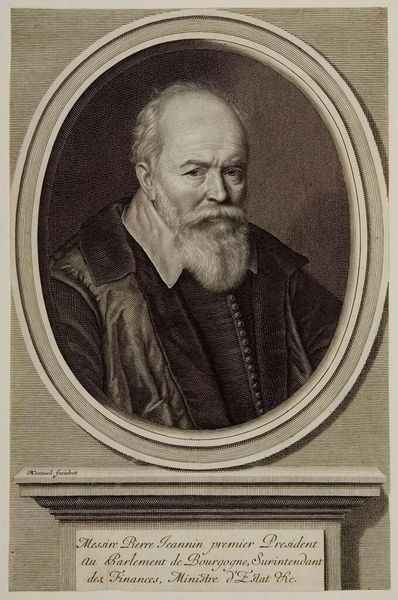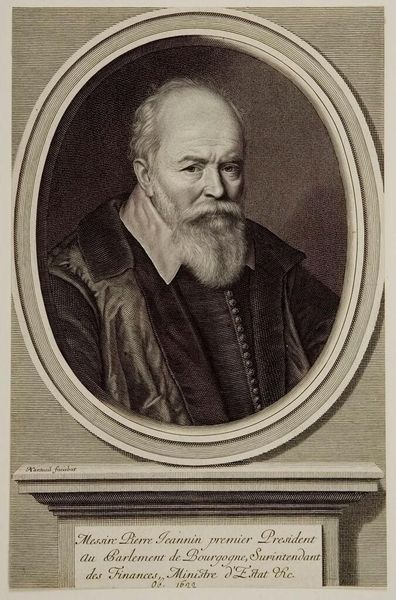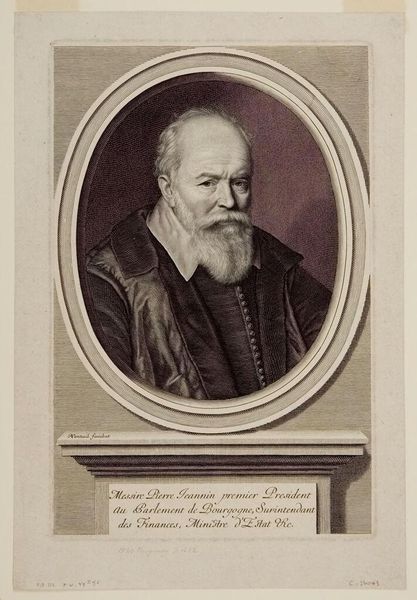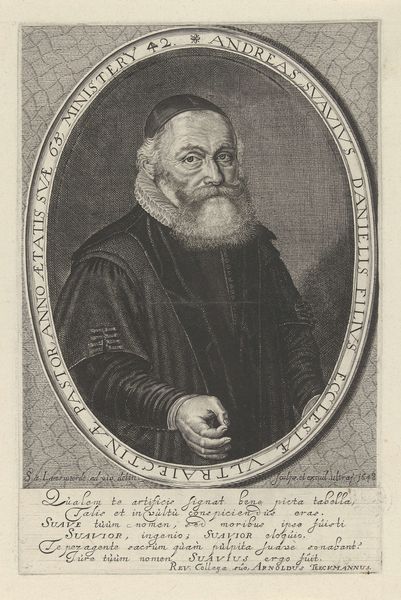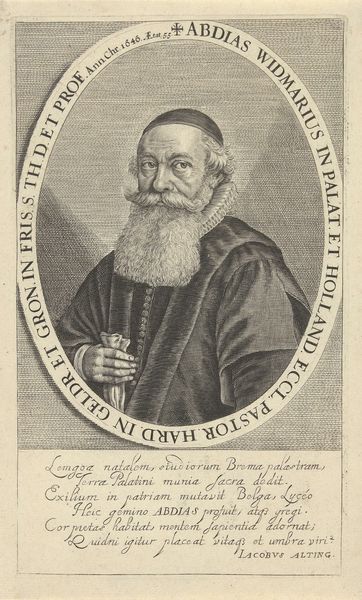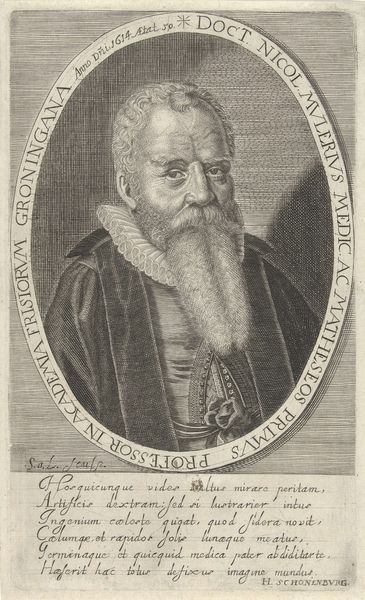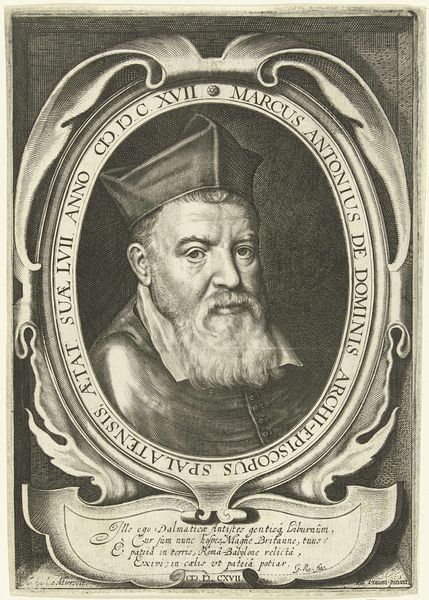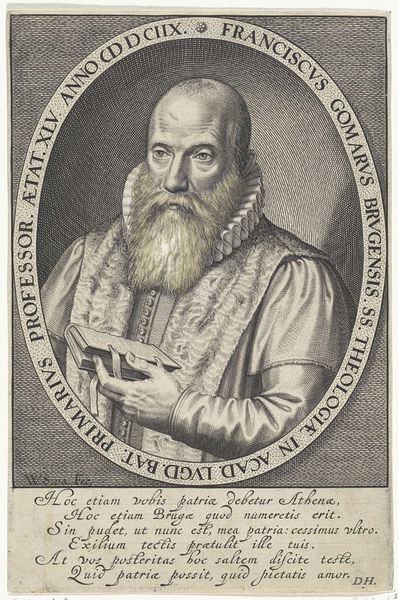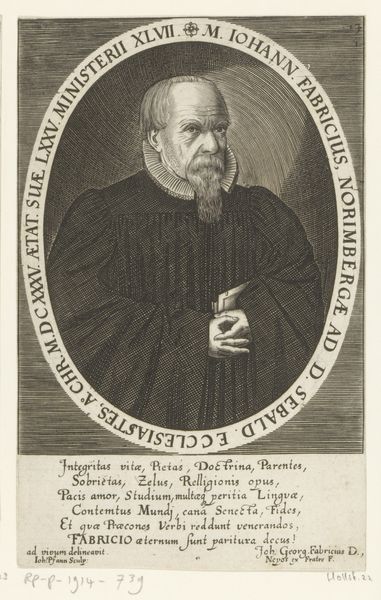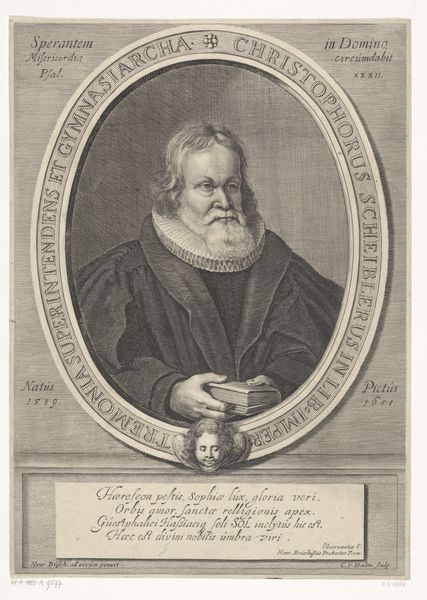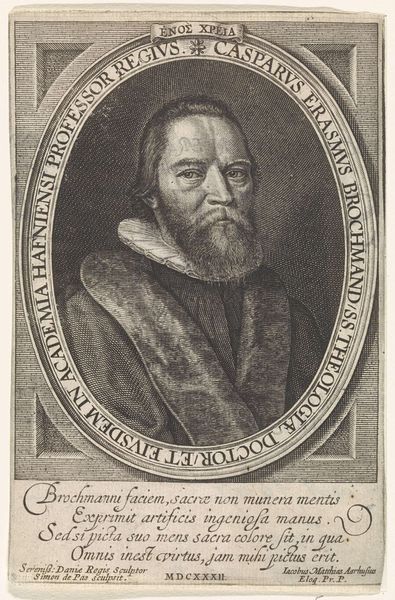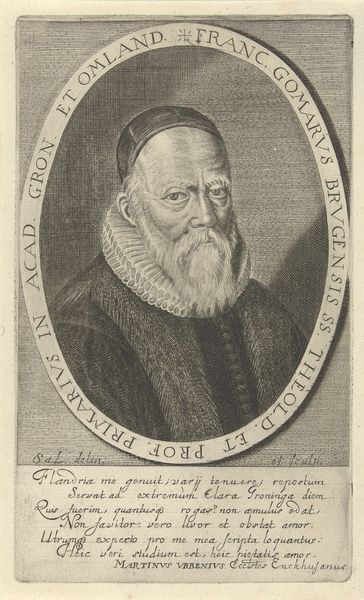
print, engraving
#
portrait
#
baroque
# print
#
history-painting
#
engraving
Dimensions: height 268 mm, width 177 mm
Copyright: Rijks Museum: Open Domain
Curator: This engraving, titled "Portret van Pierre Jeannin," was created around 1610 by Willem van Swanenburg and is currently housed at the Rijksmuseum. It strikes me as rather somber, the monochromatic palette emphasizing the subject's aged features and weighty gaze. What’s your initial read? Editor: My first impression focuses on the technique. Look closely at the detail achieved solely through lines— the layering and density to create shading, and the controlled way he carved the metalplate. This wasn’t just about portraying Pierre Jeannin; it was a demonstration of skill. The frame also, and how the inscription seems as crucial as the face. Curator: Indeed, the surrounding Baroque frame is replete with titles. Pierre Jeannin was quite the figure in his time: a diplomat and statesman serving under Henri IV of France. This print served a political purpose. These engravings of important figures were highly distributed at the time; an early form of political publicity and solidifying a national image of power and diplomacy. Editor: So, considering that dissemination and accessibility of the image – think about the role of Swanenburg himself. Was he commissioned, and how does that impact the meaning? An engraver's labor, their access to tools, workshops, distribution networks... that frames the entire work. These prints become commodities to be traded, distributed, collected - affecting how people understood Jeannin's image, beyond the state narratives. Curator: That’s an insightful point. The economics and means of distribution certainly played a role. It shifts how we view this portrait. Instead of just celebrating an individual, we see the complex web of social, political, and material relationships that brought it into existence and influenced its reception. The work enters public consciousness as both representation and an item for widespread circulation. Editor: Exactly, and that complex process continues. As the Rijksmuseum displays the artwork, and now through our conversation here today, that relationship with the audience and artwork continues. The means, display, reception– all connected and evolving. Curator: It's intriguing to consider how an artwork from the 17th century continues to participate in cultural dialogue even now. Editor: Agreed. It makes me reflect on what exactly an art historian contributes and on my own position as a person considering a picture made to represent political standing in another context. Thank you for providing these perspectives.
Comments
No comments
Be the first to comment and join the conversation on the ultimate creative platform.
